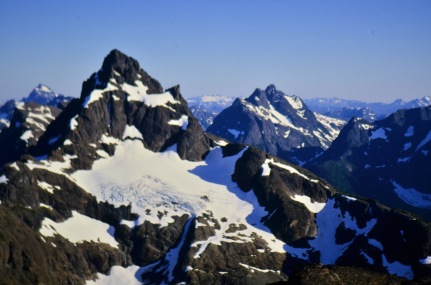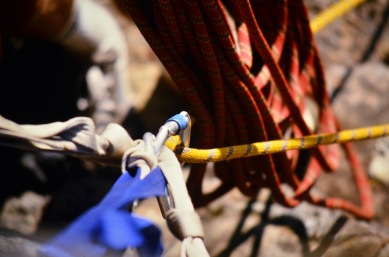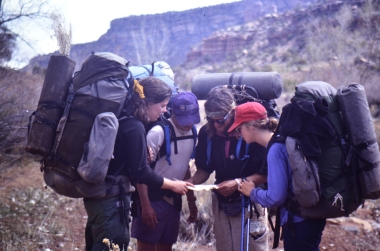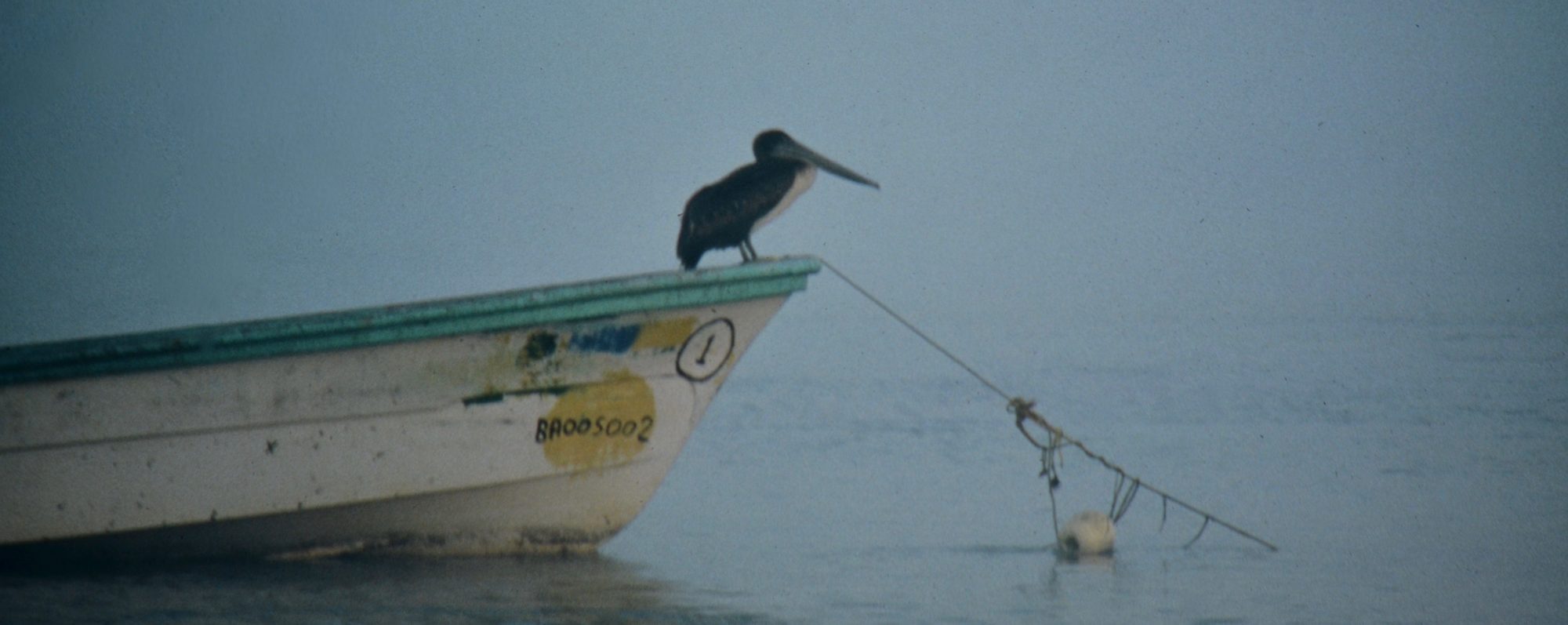Reading the blogs of others, I’ve been impressed by the insights they’ve shared from their person al and professional experiences, and I’ve been determined for some time to do likewise – to start this blog of my own, sharing my insights as an educator, informed by my professional and personal experiences. While it’s one thing to reflect on my professional philosophy, experiences, and practices in my head – accountable to nobody but myself for the fuzzy nature of my musings, perhaps blissfully unaware of the contradictions and internal inconsistencies of my own narratives – it’s quite another to put my thoughts into writing and post them to a blog. Such an enterprise forces me to clarify my own thinking and makes me accountable for my thoughts and opinions to a much wider community. I am daunted by the endeavour and, despite my concerns regarding the fine line that distinguishes tweets and blogs as self-promotion rather than meaningful sharing of insights and ideas (not to mention my self-doubts about having anything of value to share), I am determined not to let my reservations stand in the way.
al and professional experiences, and I’ve been determined for some time to do likewise – to start this blog of my own, sharing my insights as an educator, informed by my professional and personal experiences. While it’s one thing to reflect on my professional philosophy, experiences, and practices in my head – accountable to nobody but myself for the fuzzy nature of my musings, perhaps blissfully unaware of the contradictions and internal inconsistencies of my own narratives – it’s quite another to put my thoughts into writing and post them to a blog. Such an enterprise forces me to clarify my own thinking and makes me accountable for my thoughts and opinions to a much wider community. I am daunted by the endeavour and, despite my concerns regarding the fine line that distinguishes tweets and blogs as self-promotion rather than meaningful sharing of insights and ideas (not to mention my self-doubts about having anything of value to share), I am determined not to let my reservations stand in the way.
The title of my blog – “Ladders of Learning” – stems from insights gained while I was, quite literally, climbing a ladder (a story that I’ll share as a future blog post). Moreover, I like the metaphorical implications – that is, it’s easy to identify with the relatively simplistic notion of learning as climbing the rungs of a figurative ladder to greater heights. However, I’m also acutely aware that, due to its highly linear form, a ladder makes a woefully inadequate metaphor for professional growth.
Having spent many years leading remote wilderness expeditions, I recognize that a journey is a far richer metaphor for my experiences and growth as an educator and educational leader – hence “a shared educational journey” as the tagline at the top of this website and “The Metaphorical Journey” as the title of my first post. To extend this metaphor further, I think of a mountaineering ex pedition through difficult terrain (or a sea kayaking expedition with many potential hazards between our current location and our destination much farther up the coast), where the most linear route is rarely the best way to the summit. Moreover, once you reach that summit, the mountain you’ve been climbing is no longer in your view, and new summits, previously unseen, stretch out before you. Perhaps most importantly, after all that hard work to reach the peak – where you hopefully can take a moment to celebrate your successes with your fellow travelers (for my expeditions are almost always a shared journey) – you must actually descend again before you can climb another, more distant, summit. In other words, if you want to climb new mountains (be they literal or figurative), you can’t sit for long on the peak you’ve already climbed. To scramble up new summits, you must first descend from your place of relative mastery to begin another, perhaps more arduous journey up another mountain to reach a new summit.
pedition through difficult terrain (or a sea kayaking expedition with many potential hazards between our current location and our destination much farther up the coast), where the most linear route is rarely the best way to the summit. Moreover, once you reach that summit, the mountain you’ve been climbing is no longer in your view, and new summits, previously unseen, stretch out before you. Perhaps most importantly, after all that hard work to reach the peak – where you hopefully can take a moment to celebrate your successes with your fellow travelers (for my expeditions are almost always a shared journey) – you must actually descend again before you can climb another, more distant, summit. In other words, if you want to climb new mountains (be they literal or figurative), you can’t sit for long on the peak you’ve already climbed. To scramble up new summits, you must first descend from your place of relative mastery to begin another, perhaps more arduous journey up another mountain to reach a new summit.
My work as a school principal has been informed deeply by my experiences as an expedition leader. I think of my staff as team members on the same expedition, all of us travelling together, on a common journey with particular destinations as our goal, supporting and reliant upon one another for the success of our individual and collective journey. As an  expedition leader, there are moments when one may be called upon to offer words of inspiration or explicit directives to be followed, but mostly I think of a well-respected mountaineer whom I had the privilege of assisting on several expeditions before leading my own. When I asked him to share his perspective on what makes a great leader, he responded simply, “A great leader is the one keeping track of the fuel supply.” These were not the words I had expected, but I have come to recognize their wisdom. Regardless of one’s ability to navigate challenging terrain or inspire the best in others and foster a sense of teamwork, run out of cooking fuel on a glacier and your expedition will quickly come to an unhappy end.
expedition leader, there are moments when one may be called upon to offer words of inspiration or explicit directives to be followed, but mostly I think of a well-respected mountaineer whom I had the privilege of assisting on several expeditions before leading my own. When I asked him to share his perspective on what makes a great leader, he responded simply, “A great leader is the one keeping track of the fuel supply.” These were not the words I had expected, but I have come to recognize their wisdom. Regardless of one’s ability to navigate challenging terrain or inspire the best in others and foster a sense of teamwork, run out of cooking fuel on a glacier and your expedition will quickly come to an unhappy end.
These words have stuck with me for years, for decades actually. As a school-based principal, I think that sometimes, in our quest to be innovative and inspiring leaders, we forget the importance of our role as managers. When working with my vice principal as well as various teachers in leadership roles, there’s certainly a sense of excitement as we brainstorm and develop ideas for various initiatives to move our school forward. While being careful not to dampen our shared enthusiasm,  I often find myself thinking back to the words of my expeditionary mentor, noting that our credibility won’t be based on such innovative ideas, but rather on our careful attention to the more mundane details of scheduling, staffing, budget, and the zillion other logistical elements that enable a school to run smoothly. It may be less glamorous, but ensuring that our managerial tasks (the school-based equivalents of monitoring the fuel supply) are carried out effectively and efficiently, is foundational to a successful journey. When the fundamentals – the equipment, the logistics – are carefully organized, day-to-day tasks run more smoothly and group members feel greater security and trust in their leaders. Just as Maslow’s hierarchy of needs calls for safety long before reaching the heights of self-actualization, I think as principals and vice-principals we need to ensure our schools are well-organized and running efficiently in order to create the safe foundations on which engaging, innovative, and empowering practices can thrive.
I often find myself thinking back to the words of my expeditionary mentor, noting that our credibility won’t be based on such innovative ideas, but rather on our careful attention to the more mundane details of scheduling, staffing, budget, and the zillion other logistical elements that enable a school to run smoothly. It may be less glamorous, but ensuring that our managerial tasks (the school-based equivalents of monitoring the fuel supply) are carried out effectively and efficiently, is foundational to a successful journey. When the fundamentals – the equipment, the logistics – are carefully organized, day-to-day tasks run more smoothly and group members feel greater security and trust in their leaders. Just as Maslow’s hierarchy of needs calls for safety long before reaching the heights of self-actualization, I think as principals and vice-principals we need to ensure our schools are well-organized and running efficiently in order to create the safe foundations on which engaging, innovative, and empowering practices can thrive.
Leading wilderness expeditions quickly teaches you that being an effective leader isn’t synonymous with being the most  skilled or talented member of the group. When leading mountaineering or sea kayaking expeditions, there are often more skilled climbers, paddlers, and navigators in my group. The art of leadership is recognizing the talents of others, fostering a cohesive sense of community and common purpose, and empowering others to be “in the lead” at the right time under the right conditions. As a principal, I know there are teachers in my building with skills and talents that far exceed mine, and each has gifts to share not only with students, but also with colleagues. Fostering a culture in which these skills and talents thrive and inform others – a culture in which we’re all eagerly learning from one another – is perhaps the most important leadership skill of all.
skilled or talented member of the group. When leading mountaineering or sea kayaking expeditions, there are often more skilled climbers, paddlers, and navigators in my group. The art of leadership is recognizing the talents of others, fostering a cohesive sense of community and common purpose, and empowering others to be “in the lead” at the right time under the right conditions. As a principal, I know there are teachers in my building with skills and talents that far exceed mine, and each has gifts to share not only with students, but also with colleagues. Fostering a culture in which these skills and talents thrive and inform others – a culture in which we’re all eagerly learning from one another – is perhaps the most important leadership skill of all.
Finally, if this notion of being on a shared journey is to be more than a figurative one, if it is to be a lived metaphor, how do I shift the culture of a staff meeting to something that more resembles a campfire? A time to relax together and reflect on our journey so far, to appreciate one another and celebrate our successes, and to talk about our common goals, the obstacles we’re encountering along the way, and how we can overcome these hurdles to reach our objectives.
 As I write these blog posts, I’m inviting you to share in my educational journey. I hope that in sharing my experiences, perspectives, and insights, I’ll encourage others to do likewise, for the stories we tell shape who we are and who we become as learners and as leaders. Your responses will hopefully challenge and further my own thinking as well as lift my spirits when the terrain is more difficult. Thanks for joining me on this metaphorical journey.
As I write these blog posts, I’m inviting you to share in my educational journey. I hope that in sharing my experiences, perspectives, and insights, I’ll encourage others to do likewise, for the stories we tell shape who we are and who we become as learners and as leaders. Your responses will hopefully challenge and further my own thinking as well as lift my spirits when the terrain is more difficult. Thanks for joining me on this metaphorical journey.
Originally written October 16, 2016, by Ken Andrews

